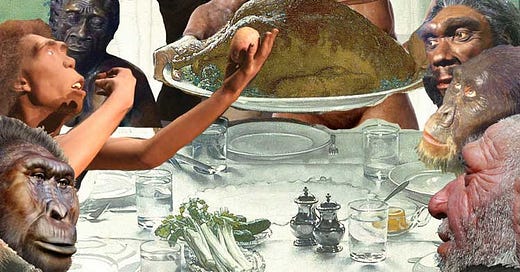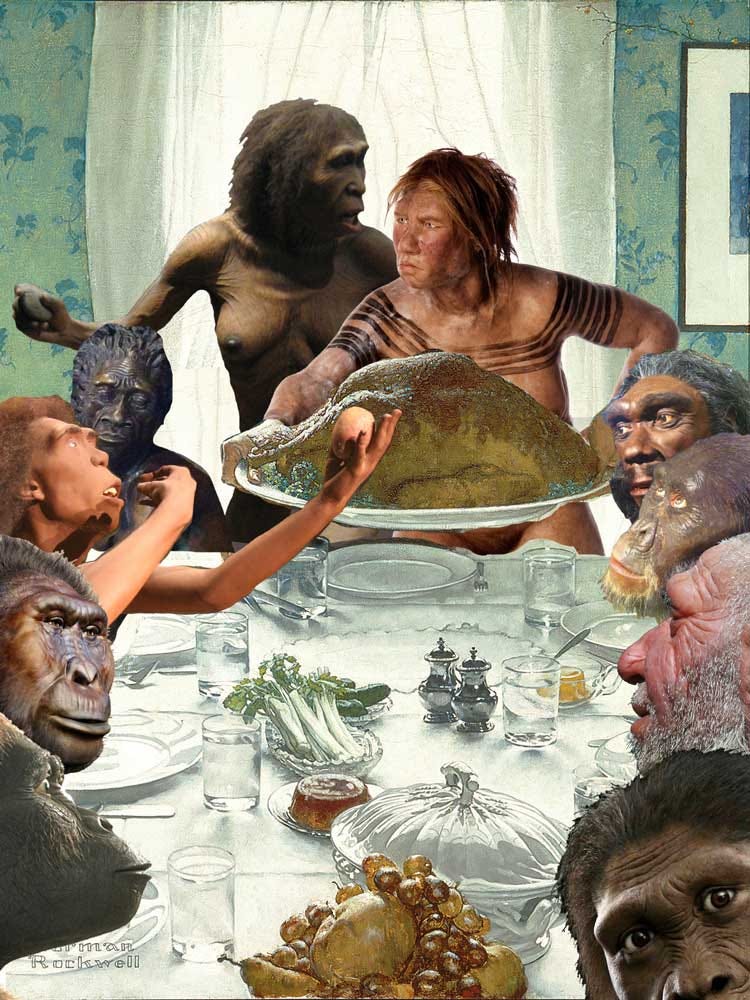A paleoanthropological Thanksgiving
A holiday greeting with a special image of the family of fossil hominins.
This is Thanksgiving weekend in the U.S., and friends on my social feeds have been forwarding a proverb: “When you have more than you need, build a longer table not a higher fence.”
I’m thankful for the opportunity to collaborate with such an outstanding group of scientists on a rewarding project. I’m also thankful for my many colleagues around the world who are so deeply engaged with the study of human origins. As paleoanthropologists, we are part of a select group, probably fewer than a thousand people worldwide, who care so much about the merest hints of evidence about our past.
It’s a strange family sometimes.
The other traditional Thanksgiving activity, after giving thanks, is arguing with aging relatives about politics and religion. Sure, this has its unpleasant moments. Let’s face it, the paleoanthropology family has a few cranky uncles who fart at the dinner table just to get a rise out of people.
But setting aside emeritus attitudes, most arguments come from shared love for the science and a deep concern about its uncertain future. Population growth and development are encroaching upon many of our most important field sites. Funding for our science is declining globally, particularly when measured against the growing costs of fieldwork and analysis. Students are entering the field as professionals without ever seeing a cast of some of the most important discoveries in the history of our field.
Still there is much to give hope. The pace of paleoanthropological discovery has accelerated during the past fifteen years. A greater proportion of students than ever are being trained in field research methods, with field schools at some of the most iconic sites. New technologies have unleashed the data hidden within old fossils. These discoveries have transformed our view of ancient populations.
The roots of paleoanthropology are in the pre-evolutionary days of the nineteenth century. Today we work to understand one of the richest integrated datasets in twenty-first century biology. Even though there may be fewer than a thousand of us around the world, paleoanthropology is vastly larger than any single research team. The extended paleoanthropological family is growing, not by training new paleoanthropologists, but by greater integration of human geneticists and other biologists who can give new perspectives on the hominin fossil record and our evolutionary history.
It is an extraordinary time in our science, and for that I am thankful.




